A groundbreaking technique that is revolutionizing the way headphones are displayed implies using computer-generated imagery to your advantage. By merging technology and creativity, CGI headphone product photography offers artists and brands unparalleled opportunities to showcase their products.
From meticulous attention to detail to perfecting lighting and angles, this advanced approach produces stunningly realistic images that captivate the viewer. In this article, you will learn how the industry has changed, why high-quality imagery is crucial, and how you can create a stunning picture of this popular audio accessory.
The importance of quality headphones product photography
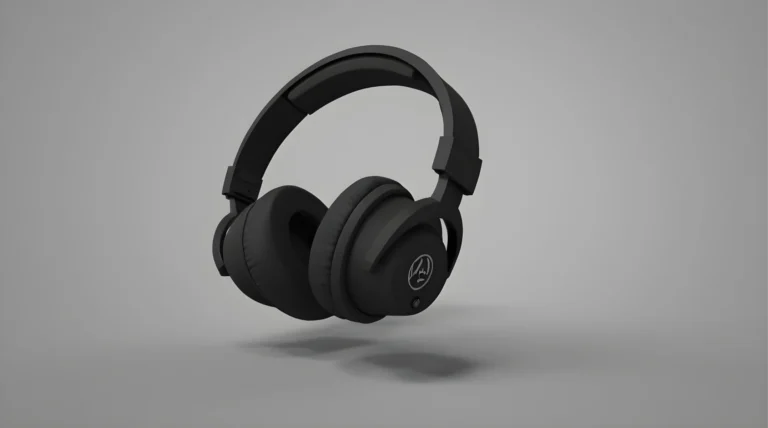
High-quality images are important when presenting your product online for several reasons.
First, visually appealing and professional images have the power to immediately grab the attention of potential customers. A stunning image creates a positive first impression and increases the likelihood of further engagement with the product.
Secondly, high-quality images provide customers with a clear and accurate representation of the headphones, showing their design, features, and overall quality. This transparency builds trust in your brand, increases the customer’s perception of the value of your product, and increases the likelihood of conversion.
In addition, proficient images show that you are committed to professionalism and attention to detail, positioning your brand as trustworthy. This is important because, in a competitive marketplace where consumers have numerous options, quality images help your brand stand out and give you a competitive advantage.
Moreover, qualitative images can be used through various marketing channels such as websites, social media platforms, and advertising campaigns to increase your reach and visibility. This makes them more likely to be shared and used on social media, driving brand awareness and potentially leading to viral marketing opportunities.
Top-quality visual content also allows potential customers to view the headphones from different angles, thus making informed decisions based on their preferences and needs. Crisp images can highlight intricate details such as colors, textures, and finishes that entice customers and set your product apart.
Finally, customers associate high-quality images with better product performance, making them more inclined to choose your headphones over the alternatives.
Overall, investing in high-quality visuals for headphones product photography is a strategy move that can positively impact brand perception, customer engagement, conversion rates, and overall business success.
Types of headphones
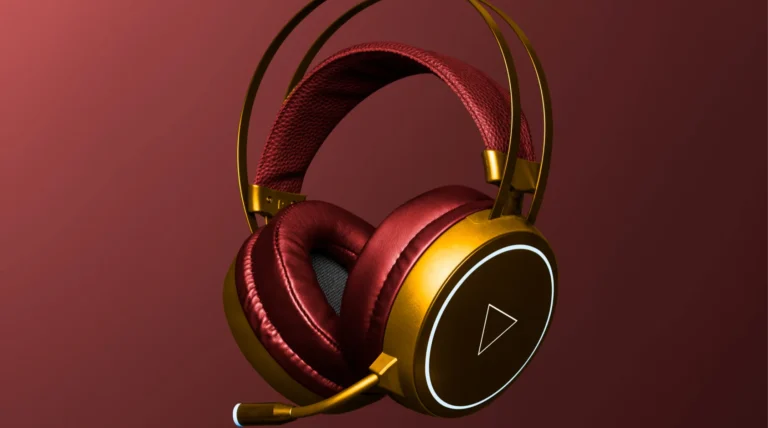
There are several types of headphones available on the market, and, depending on what you plan on using them for, they can be categorized into different classes. However, despite all the variations, there are just four main types of headphones.
- Over-ear headphones – these have large ear cups that fully enclose the ears. They provide excellent sound quality, comfort, and noise isolation as they physically block external noise. Over-ear headphones are preferred by those who want immersive sound experiences.
- On-ear headphones – unlike the previous mentioned model, these rest on the ear rather than fully encompassing them. They are often more lightweight and compact, making them a portable option. However, they may offer slightly less noise isolation and can cause discomfort during extended use for some individuals.
- In-ear headphones – also known as earbuds, or in-ear monitors, these headphones fit directly into the ear canal. They are highly portable, making them perfect for activities like jogging or commuting. In-ear headphones come in various designs, such as wired and true wireless, and provide good noise isolation while offering decent sound quality.
- Wireless headphones – this type uses Bluetooth technology to connect wirelessly to audio sources. They eliminate the need for cords, allowing for greater freedom of movement. These audio accessories can be either over-ear, on-ear, or in-ear, offering convenience and flexibility.
Why it is important to know them for CGI product photography
Knowing the different types of headphones is crucial in CGI product photography, because it allows you to accurately represent the product in a virtual environment. Each headphone type has unique characteristics that need to be faithfully captured.
Understanding these nuances helps create a realistic and believable CGI representation. Paying attention to details such as the shape of the ear cups, padding, headband size and presence of wires contributes to the overall quality of the CGI image.
Additionally, accurately representing functionality, such as how the headphones fit on ears or in ear canals, enhances the customer’s visualization and understanding of the product. Attention to detail is paramount in CGI, ensuring that the virtual product reflects its real-world counterpart. This authenticity builds trust and confidence in potential customers.
Furthermore, customers can better visualize themselves using the product due to the faithful representation in CGI. Accurate representation enhances the overall quality of and leads to more successful outcomes for businesses.
In conclusion, the knowledge of headphone types is crucial for 3D renderings as it enables artists to recreate their design features and functionality, resulting in realistic and high-quality representations that resonate with customers.
The advantages of using CGI photography instead of traditional photography
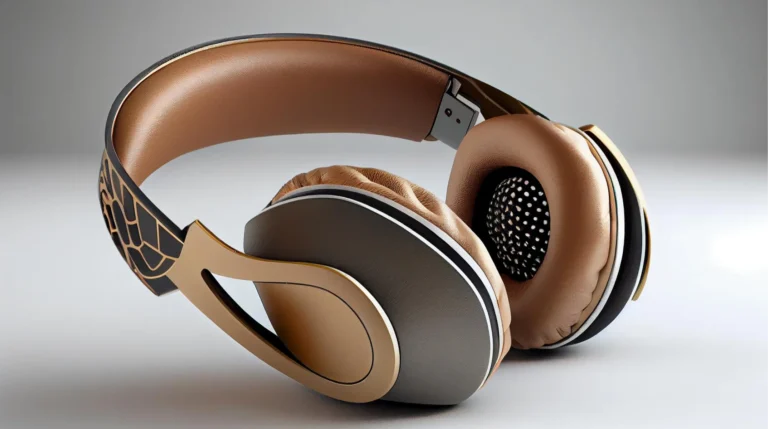
Using computer-generated images for product marketing instead of traditional photography offers you several advantages and benefits.
They offer the photographer unprecedented control and flexibility. Every aspect of an image, including lighting, composition, colors, and textures, can be tweaked to achieve the desired artistic vision. This level of control ensures that the result is aligned with the photographer’s intent and the concept of your project.
Computer-generated image photography opens up endless creative possibilities. Elaborate and fantastical scenes that would be impossible or impractical using traditional methods can be created effortlessly with computer software. This freedom allows photographers to let their imagination run wild and bring visually stunning and captivating images to life.
CGI also eliminates the need for physical props, sets, or locations, reducing costs and allowing more versatility. Changes or revisions can be made seamlessly during the creative process, saving time and resources.
It can also create hyper-realistic images that are almost indistinguishable from real photos. This level of realism can create a sense of awe and immersion that captivates the viewer and makes the images memorable.
In addition, 3D images offer precise control over lighting conditions, allowing photographers to recreate complex and difficult lighting scenarios with ease. This ensures that every detail of the image is accurately reproduced, enhancing the overall quality and impact.
Another benefit is the consistency that a digital product image can provide. Once the digital scene is created, it can be duplicated and adapted as required, ensuring consistency across multiple projects or variations of the same image.
Since everything is produced on the computer, the entire workspace is also digital. This ensures an efficient workflow and a streamlined process. Adjustments and edits can be made quickly and easily without extensive reshoots or complex retouching.
Finally, CGI photography allows for greater experimentation and exploration. With digital tools, photographers can push the boundaries of their creativity and try out new techniques, styles, and perspectives to create truly unique and innovative images.
In summary, CGI photography offers several benefits that revolutionize the traditional photography process. It removes the physical constraints and increases productivity while saving time and money.
How to create CGI headphones photography
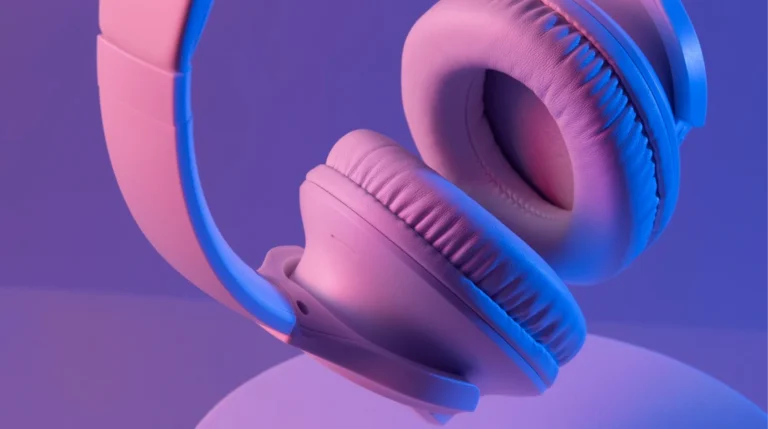
It is best to leave it to professionals, as this will help you save time and money. Our team can help you decide which product photography style best matches your headphones or if an animation is better suited for it. Also, you can try us for free and see how your product can come alive before collaborating with us. However, if you’re determined to create a computer-generated image for your product yourself, it involves a step-by-step process. Here’s a more detailed breakdown of it.
- Reference gathering – Collect reference images of the headphones you want to recreate. If you already have the item in your possession, that’s even better. Look for different angles, close-up shots, and any unique design features or materials.
- 3D modeling – Use specialized software like Autodesk Maya or Blender to create a digital 3D model of the headphones. Pay close attention to scale, proportions, and accuracy in capturing the intricate details.
- Texturing – apply materials and textures to the 3D model to mimic the appearance of the real item. This involves creating or sourcing textures for various parts, such as the metal, plastic, or fabric components. Use UV mapping techniques to accurately place textures on the model’s surface.
- Lighting setup – set up virtual lighting in the 3D scene to bring the audio accessory to life. Utilize virtual studio environments or HDRI maps to provide realistic lighting and reflections on the surfaces of the headphones. Experiment with the position, intensity, and color of the lights to achieve the desired look and model.
- Camera positioning – position the virtual camera to capture the headphones from the desired angle and composition. Adjust the camera settings such as the aperture, focus, and depth of field to achieve stylized or realistic effects.
- Rendering – render the 3D scene to produce the final image. This process calculates the interaction of lights, shadows, and materials within the scene to generate a high-quality image.
- Post-processing – use software like Adobe Photoshop or similar image editing tools to refine the final output. Apply color correction, adjust levels, add reflections, or fine-tune any aspects to enhance the realism and aesthetics.
By following these steps with attention to detail, lighting, texturing, and composition, you can create impressive CGI headphone photographs that look virtually indistinguishable from traditional photography.
Key factors to consider when creating CGI headphones product photography
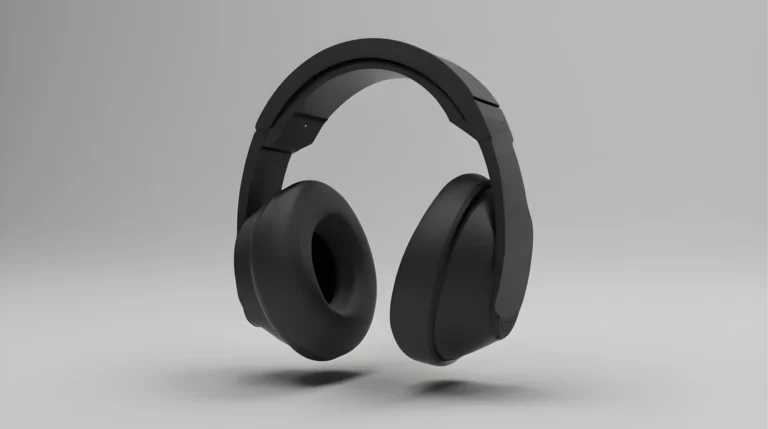
To create a beautiful product photography, there are a few key factors that you should always pay more attention to. These factors include lighting settings, materials and textures for renderings, perspective, and angles, and post-processing techniques.
The lighting setup is a crucial element for creating realistic CGI images. Use multiple light sources and adjust the intensity and color temperature. In this way, you can appropriately emphasize the texture of the headset, whether glossy or matte and create shadows that match the environment. Experiment with different types of lighting and find out which one best suits the mood you want to create with your image.
The choice of materials and textures is another key factor for effective product photos. It’s important to use high-quality materials and textures that realistically represent the headphones. Pay attention to small details such as reflections, unevenness, and glossiness to make the image look more authentic and visually appealing.
The perspective and angle at which the headphones are presented have a significant impact on the buyers. You can effectively showcase the headphones’ unique design features, shape, and style by choosing the right angle and camera position. Close-ups are ideal for highlighting details, while wider shots can better convey the overall aesthetic of the product.
Post-processing is another important factor that can improve the outcome of the image. In this stage, you adjust lighting, color, contrast, and saturation to optimize the final image. In addition, post-processing techniques allow you to add depth of field effects and composite multiple layers, among other things.
Another important aspect to consider when taking product photos of headphones is the headphone cable, plug, or connector. Although not all models have one, this small detail can help clients better understand the functions and features of the headphones.
The brand name or logo should also be in the image to increase recognition and brand awareness. This helps to spread the brand across different platforms, especially if the images of the headphones are to be shown not only on your website but also in other media.
The ideal target audience must be kept in mind when presenting the headphones. This way, you can create a more accurate product visualization that might appeal to the intended viewers. For example, the more mature target group will respond positively to elegant and simple designs, while the younger target group will be looking for more extravagant features such as cat ears or lights.
It’s essential to use a credible and complementary background that effectively showcases the products. The background can make the product stand out or add context. The right choice of background can change the viewers’ perspective and create a more compelling image.
The color scheme should complement the background and create a sense of visual harmony that better showcases the product. For example, if your target audience is adults, choose appropriate colors. However, if your target audience is children, soft and bright colors are more suitable.
Finally, consider the overall composition of the image, the placement of visual elements, and their interplay to ensure that the product and its features are presented effectively.
By understanding these key factors and keeping them in mind when creating CGI headphone product photography, you can create compelling images that capture the audience’s attention and showcase the product effectively.
Wrapping up
In conclusion, high-end CGI headphone product photography revolutionizes traditional photography by leveraging computer-generated imagery to create visually stunning and customizable pictures. This technique offers complete control over every aspect of the product’s appearance, resulting in flawless and visually impactful representations.
High-end CGI photography allows brands to enhance their image, capture attention, and drive sales in a highly competitive market. With its ability to create consistent and polished images, high-end CGI photography is quickly becoming a popular choice for product advertising and marketing.
FAQ
What is high-end CGI headphone product photography?
This type of photography uses computer-generated images to create visually stunning and customizable depictions of headphones.
How does it differ from traditional product photography?
It differs from traditional photography by offering complete control over the product, allowing you to create a flawless representation.
What are the advantages of using it for showcasing headphones?
The advantages include the ability to create consistent and polished images, customize every aspect of its appearance, and capture attention in a highly competitive market.
Can CGI photography accurately represent the materials and textures of the headphones?
Yes, it can accurately represent the materials and textures of headphones, providing a realistic and detailed representation of it.
How does it enhance brand image and drive sales in the market?
It does so by presenting the headphones in a visually appealing and professional manner, captivating the audience and differentiating your brand in the market.


























